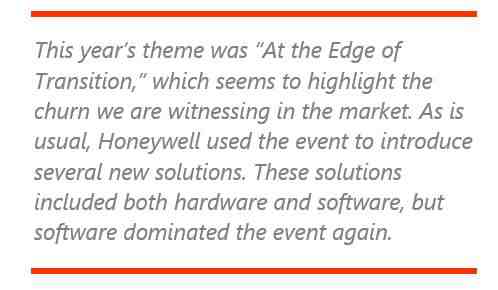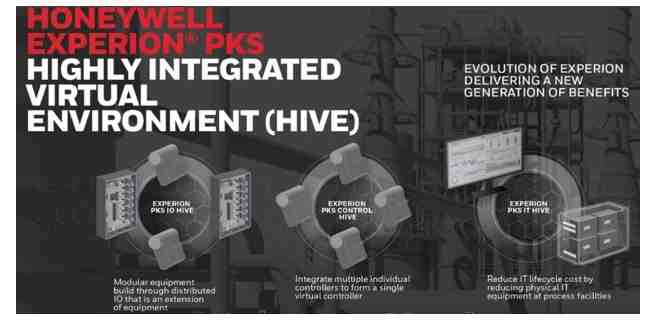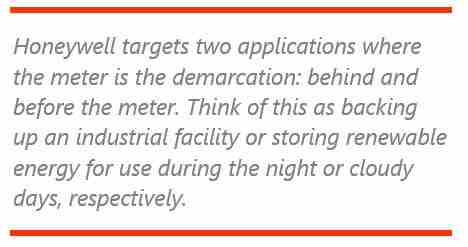

 ARC Advisory Group recently attended the 45th annual Honeywell Process Solutions Users’ Group (HUG) Americas conference in Orlando, Florida. Conference attendance and energy alike were strong, with over 1,200 attendees, nearly as many as (pre-COVID) 2019. This year’s theme was “At the Edge of Transition,” which seems to highlight the churn we are witnessing in the market. As is usual, Honeywell used the event to introduce several new solutions. These solutions included both hardware and software, but software dominated the event again.
ARC Advisory Group recently attended the 45th annual Honeywell Process Solutions Users’ Group (HUG) Americas conference in Orlando, Florida. Conference attendance and energy alike were strong, with over 1,200 attendees, nearly as many as (pre-COVID) 2019. This year’s theme was “At the Edge of Transition,” which seems to highlight the churn we are witnessing in the market. As is usual, Honeywell used the event to introduce several new solutions. These solutions included both hardware and software, but software dominated the event again.
A few key takeaways include:
“We are on the edge of transition,” began Ujjwal Kumar, president of Honeywell Process Solutions, who welcomed the customer attendees to the conference. “Of course, we are also in the midst of transition. When the world was locking down, many companies were seeking transformational change. It feels like the pace of change has been permanently altered.”
“While companies’ journeys may be different, the destination looks similar,” said Mr. Kumar, citing ongoing progress in efficiency, autonomy, and diversity fronts. Honeywell’s efficiency and sustainability contributions derive from solutions for process automation and optimization, emissions control and reduction, hydrogen production, and battery technologies.
“We are also enabling autonomous operations safely, reliably and efficiently with limited human input,” he said. “And we enable businesses to hire a greater range of voices and talents.”
There were several technology announcements at HUG, as is normal. Many reflect a continual evolution of the control systems, plus a couple of surprises. There is a lot to unpack. What is also normal is UOP involvement at this event and this time with several announcements of its own.
Much of the Honeywell offering is being branded as “Industrial Autonomous.” It is the idea that solutions from field to enterprise can be utilized to leverage autonomy at all levels as it makes sense. The focus is to create an organization that can provide the best day of production every day and make every person an expert. There are four components in the Industrial Autonomous vision.
There were three offerings highlighted as supporting this vision. One is the Honeywell Forge Plant-Wide Optimizer that can recognize individual models within each process area and find intersection points between those models to drive optimizations, whether at one asset, across a plant, or as an enterprise-wide solution.
The second is Honeywell Forge Asset Performance Management for Industrial, which operates on-premise or in the cloud to integrate assets in real-time, enabling the visualization of asset-performance KPIs. This allows users to better understand available assets and asset performance. Jason Urso, CTO, Honeywell Process Solutions, emphasized how this knowledge-management tool fosters the addition of existing operational best practices into the system to inform artificial intelligence and machine-learning elements that further refine monitoring capabilities.
The third offering is the Honeywell Versatilis tool for equipment health that is an Internet of Things transmitter that easily, remotely, and wirelessly monitors vibration, acoustic signatures and surface temperatures of assets without the need to send technicians out on wasteful inspection rounds. The offering includes the Honeywell Versatilis Instrument Configuration & Calibration tool, which modernizes current calibration practices utilizing Bluetooth communication with an iPad, rather than a dedicated handheld device.
As usual, the technology update session hosted by Mr. Urso, started with a skit. This time it was used to introduce the company’s ability to upgrade systems remotely (while flying in a plane, in this case.) Many Honeywell users want to emulate their legacy networks, applications, and interface modules in software. Now, all the legacy devices can be emulated in LCN software, eliminating electronic obsolescence, and giving systems “infinite life.” “In short, we’re not really migrating anymore. We’re simply upgrading, while preserving intellectual property (IP),” Mr. Urso explained.
Mr. Urso explained this upgrade-style migration consists of three main steps:
This process replaces all the LCN hardware types; AMs, NIMs, HMs, HGs, EPLCGs, etc.
Honeywell has added two new controllers to the PM-family: EHPMx and C300PM. The EHPMx is faster, contains a firewall, and can be upgraded to a C300PM, with which it shares its electronics. The C300PM allows users to migrate their current xHPM control into a controller that can also host C300 CEE control schemes. In other words, users can maintain existing control intellectual property and integrate it with the modern control languages available in a C300. Additionally, this C300PM can participate in the Control and I/O HIVEs.
 The HIVE concept was introduced in 2019 and is segmented into three areas: I/O HIVE, Control HIVE, and IT HIVE. The I/O provides a pool of sensor inputs and outputs that can be utilized by any controller in the community. Control HIVE can be envisaged as control server farm hosting a group of primary and backup controller entities that have access to the I/O HIVE. These controller entities can also include IEC61131 PLC-type controllers, therefore replacing PLCs and enjoying the same failover benefits. Also available to the Control HIVE is OPC-UA server and client functionality. Another interesting development is that the Control HIVE can be hosted either in C300 hardware or on an approved server platform.
The HIVE concept was introduced in 2019 and is segmented into three areas: I/O HIVE, Control HIVE, and IT HIVE. The I/O provides a pool of sensor inputs and outputs that can be utilized by any controller in the community. Control HIVE can be envisaged as control server farm hosting a group of primary and backup controller entities that have access to the I/O HIVE. These controller entities can also include IEC61131 PLC-type controllers, therefore replacing PLCs and enjoying the same failover benefits. Also available to the Control HIVE is OPC-UA server and client functionality. Another interesting development is that the Control HIVE can be hosted either in C300 hardware or on an approved server platform.
HALO stands for Highly Augmented Lookahead Operations and was presented as an “intelligent advisor.” HALO is a frame around a process display that integrates operator procedures, a scheduler, and an advisor. The advisor leverages data from the systems event log to present the board operator with suggestions on how to handle a situation based on analysis of similar situations in the past. Along the bottom of the display, affectionately named the “runway,” is a look-ahead feature that depicts approaching events and notes on the runway (or timeline) into the future. The operator selects items to find out details about upcoming tasks and can add their own. The presentation of data can also walk the operator through various operations, present the operator with key performance indicators of their performance and that of the overall process.
There were three main UOP technologies introduced at HUG: low-carbon fuels, hydrogen, and batteries. Andrea Bozzano, Senior Director of R&D Honeywell UOP, joined the technology keynote to discuss what sustainable means for the larger Honeywell organization, and the several pathways to greenhouse gas emissions reduction the company is developing, including the fuel transition, carbon capture technology, and the real-time monitoring of emissions—including fugitive emissions.
Regarding new fuels, Honeywell has already been tackling the energy transition to renewable sources, with its Ecofining technologies for the production of renewable diesel fuel. “The molecules that define these fuels are identical to the types of molecules that are defined and controlled from their petroleum counterparts,” Mr. Bozzano said. Companies can blend those products into fuels and significantly lower the carbon footprint of their petroleum equivalents.
By 2050, more than 60 percent of the jet fuel produced in Europe is expected to come from renewable resources. For more than a decade, Honeywell has offered technology solutions for producing renewable diesel, as well as sustainable aviation fuel (SAF). One of the major new feedstocks that Honeywell is considering is biomass conversion, through a partnership with Alder Fuels to develop this renewable fuel. Honeywell expects to commercialize the technology within the next few years. Honeywell also announced that United Airlines has signed a takeoff agreement for up to 1.5 billion gallons of the new fuel over the next 20 years.
The second focus was on hydrogen. One of Honeywell’s newest innovations in renewable fuels is the integration of clean hydrogen with this Ecofining technology. “We can take some of the byproducts for Ecofining and use them as feedstock to the steam methane reformer to make clean hydrogen,” Mr. Bozzano said. Combined with carbon capture technology, this can reduce the carbon footprint of these fuels up to 90 percent, compared to petroleum alternatives.
Hydrogen blending is another important pathway to sustainability. In the refinery space, the majority of hydrogen is produced through a process called steam methane reforming or autothermal reforming, using natural gas to produce hydrogen. “Green hydrogen is exciting because it comes from the electrolysis of water using renewable power,” Mr. Bozzano said. The technology exists today, but it is not yet cost effective, he added. Honeywell is working to make significant improvements in the efficiency and cost of electrolysis, using its expertise in membranes, catalysis, material science, and chemistry. Honeywell is expecting to commercialize the technology soon.
The third focus was on Redox flow batteries. Lithium-ion has high energy density and charge/discharge time, however, a redox flow battery’s strength is the rate of power delivery. The electrolyte is infinitely scalable and 500 MW can be delivered for as long as necessary by scaling the electrolyte tank size. According to Honeywell, redox batteries are a good option for longer-duration applications. For shorter durations, Honeywell recommends its lithium-ion solution (see below). Unlike Li-ion batteries, the redox electrolyte solutions do not have flammability or other issues. Honeywell UOP is looking at small-scale prototypes right now. Honeywell has an agreement in place with Duke Energy to supply a 100-kWh demonstration unit for testing this year. This was announced earlier this year.
Because the catalyst is printed on a membrane, the redox flow battery is a materials play, and fits in with Honeywell UOP’s strengths. “We are a membrane company,” emphasized Bryan Glover. “In a flow battery, the electrolytes don’t live in the cell. The electrolyte passes its proton charge across the membrane.”
Adding to its sustainable attractiveness, the redox flow battery as a system is readily recyclable because there are no little cells that must be split apart. Honeywell UOP sees redox batteries as universally applicable for grid-level storage because of the long-term characteristics of the discharge cycle, potentially paired with wind or solar generation. Another good application is backup power. According to the company, cost curve is relatively flat. The best application would be large-scale stationary power, primarily grid-connected, that requires more than four to six hours of service.
There were two aspects of Honeywell’s Battery Energy Storage solutions presented, the modular battery unit and the supervisory coordination of the unit(s). For the modular battery unit, consider a shipping container with lithium-ion battery banks, climate control,  and a battery management system that leverages Experion control and SCADA technology. In the positioning, Honeywell targets two applications where the meter is the demarcation: behind and before the meter. Think of this as backing up an industrial facility or storing renewable energy for use during the night or cloudy days, respectively. Later, as previously noted, the lithium-ion batteries could be replaced with the redox flow batteries based on the application.
and a battery management system that leverages Experion control and SCADA technology. In the positioning, Honeywell targets two applications where the meter is the demarcation: behind and before the meter. Think of this as backing up an industrial facility or storing renewable energy for use during the night or cloudy days, respectively. Later, as previously noted, the lithium-ion batteries could be replaced with the redox flow batteries based on the application.
The battery solution is scalable so users can add modules to achieve the amount of energy they need to store. As the number of modules grows, the need to manage the modules increases. Honeywell provides a cloud-based solution to manage groups of electrical storage units as a virtual power plant. This Energy Management System can manage diverse types of storage units regardless of provider. Currently, there are two installations operational: one in Eastern Europe and one in North America.
There was a plethora of content for event attendees. Honeywell continues to invest in and expand its OT cybersecurity offerings with both technology and people. It also continues to expand its operator effectiveness solutions. The demo center had much of the portfolio available for discussion.
From ARC’s perspective, the Honeywell offerings show an understanding of the market and its customers’ needs. The greatly simplified migration story is powerful. The development of the Control HIVE and opening it up by including OPC UA will allow current users to move forward and incorporate newer technologies as they see fit.
The battery storage solutions will open new conversations especially as oil companies pivot to become energy companies and as manufacturers look for solutions to become greener and maintain reliable power as the grid pivots to support renewable energy technologies.
ARC Advisory Group clients can view the complete report at ARC Client Portal
If you would like to buy this report or obtain information about how to become a client, please Contact Us
Keywords: Honeywell Process Solutions, DCS, Control, Autonomy, UOP, Redox, Battery, Renewable, Sustainability, Transition, Hydrogen, LCN, EHPM, UCN, HIVE, Forge, Ecofining, ARC Advisory Group.

